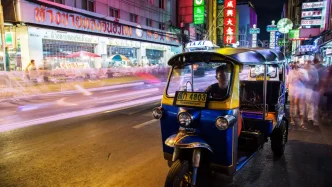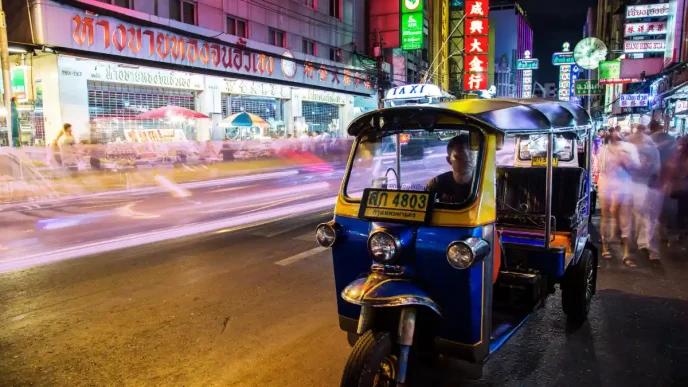Singapore has unveiled an ambitious plan to slash its greenhouse gas emissions to between 45 and 50 million tonnes (Mt) of carbon dioxide equivalent (CO2 eq) by 2035, a significant reduction from the projected 60 Mt in 2030. Announced on 10 February 2025, this new target, submitted to the United Nations under the Paris Agreement, marks a critical step in the city-state’s journey towards achieving net-zero emissions by 2050. As a small island nation with limited natural resources and heavy reliance on fossil fuels, Singapore faces unique challenges in decarbonisation, yet its latest pledge signals a determined push to align with global climate goals.
The announcement comes as part of the Nationally Determined Contributions (NDCs) required every five years under the Paris Agreement, a global pact aimed at limiting warming to 1.5°C above pre-industrial levels. With over 10 countries, including the UK, US, and Brazil, already submitting their 2035 targets, Singapore’s commitment reflects a broader international momentum to escalate climate action. However, as the global average temperature breached 1.55°C in 2024, experts warn that the 1.5°C target is increasingly out of reach, underscoring the urgency of such pledges.
A Linear Path to Net-Zero Amid Constraints
Singapore’s current emissions stand at approximately 58.59 Mt CO2 eq as of 2022, representing just 0.1% of global greenhouse gas output. Despite its modest contribution, the Republic has positioned itself as a proactive player in the fight against climate change. The National Climate Change Secretariat (NCCS) stated on 10 February that the lower bound of 45 Mt CO2 eq by 2035 ensures a “linear path” to net-zero by mid-century, aligning with international expectations. However, the range of 45 to 50 Mt acknowledges the practical challenges of decarbonising an “alternative energy-disadvantaged island state.”
Unlike larger nations with abundant land for renewable energy projects, Singapore’s options are limited by its geography. Natural gas accounts for around 95% of its energy needs, while solar power—the most viable renewable source—contributes only 2% to the electricity mix. Even with optimistic projections, solar energy is expected to reach just 10% by 2050. To address these constraints, the government is maximising solar potential through innovative means, such as installing panels on reservoirs, walkways, car parks, and building facades, as detailed in its 31-page UN submission.
Yet, as the NCCS noted, the pace of decarbonisation hinges on advancements in nascent technologies like hydrogen and carbon capture and storage (CCS), as well as international collaboration. “Achieving the 2035 target will be a challenge,” the submission acknowledged, pointing to the need for stricter regulations, market-based policies, and significant investments in low-carbon solutions to drive emissions reductions across all sectors.
Global Stocktake and National Strategy
Singapore’s 2035 targets were shaped by the outcomes of the first global stocktake, a UN process concluded in 2023 to assess collective progress on climate goals. Co-facilitated by Singapore’s chief negotiator Joseph Teo, the stocktake urged nations to scale up renewable energy use and reduce fossil fuel dependency. In response, Singapore has aligned its domestic policies with these recommendations, a move hailed by climate policy observer Melissa Low, a research fellow at the NUS Centre for Nature-based Climate Solutions.
“This is the first time Singapore has announced a downward emissions trajectory after planning to peak in 2028,” Ms Low said on 10 February. She added that the influence of the global stocktake—partly due to Singapore’s role in negotiations—demonstrates its effectiveness in advancing national climate ambitions. However, she cautioned that the contribution of emerging technologies like CCS to this downward trend remains unclear, raising questions about the feasibility of the targets without significant breakthroughs.
Singapore’s climate journey has evolved over the past decade. Its initial 2015 pledge focused on reducing emissions intensity—emissions per dollar of GDP—by 36% from 2005 levels by 2030. In 2020, it committed to peaking emissions at 65 Mt CO2 eq around 2030, later revising this to 60 Mt in 2022 with a net-zero goal for 2050. A separate 2024 report further refined the timeline, projecting a peak of 64.43 Mt in 2028 before a decline. The 2035 target of 45-50 Mt builds on this trajectory, supported by strategies like industrial energy efficiency, clean energy imports, and carbon capture.
International Collaboration as a Lifeline
Given its domestic limitations, Singapore is banking heavily on cross-border partnerships to meet its climate goals. Plans include importing low-carbon electricity from neighbouring countries, exploring regional CCS projects, and purchasing carbon credits from overseas initiatives. Carbon credits allow Singapore to offset part of its emissions by funding environmental projects abroad, reducing the pressure to achieve all reductions domestically. While this approach aligns with Paris Agreement mechanisms, it also highlights the Republic’s structural challenges in achieving self-reliant decarbonisation.
The reliance on international solutions is not without risks. Importing clean energy or securing carbon credits depends on geopolitical stability and the willingness of partners to collaborate on such projects. Moreover, the effectiveness of carbon offset schemes has faced scrutiny globally, with concerns about their long-term impact on actual emissions reductions. If these external avenues fall short, Singapore may need to double down on domestic measures, potentially requiring even tougher regulations and economic adjustments.
Economic and Social Implications
Meeting the 2035 target will necessitate sweeping changes across Singapore’s economy. The government has signalled plans for more stringent policies, including carbon pricing and market incentives, to push industries towards greener practices. While these measures could accelerate decarbonisation, they may also raise costs for businesses and consumers in the short term. For a trade-dependent economy like Singapore’s, balancing climate ambitions with economic competitiveness will be a delicate act.
On the flip side, the NCCS emphasised the potential upsides of this transition. “These solutions have the potential to grow the green economy, create jobs, and generate new opportunities in a low-carbon world,” it stated. Investments in green technologies and infrastructure could position Singapore as a regional leader in sustainability, attracting talent and capital to emerging sectors. Senior Minister Teo Chee Hean, who chairs the Inter-Ministerial Committee on Climate Change, is expected to elaborate on these plans during the 2025 budget debate, shedding light on how the government intends to navigate these trade-offs.
For ordinary Singaporeans, the push towards net-zero could mean changes in daily life, from higher energy costs to shifts in urban planning as solar infrastructure expands. Public acceptance of such measures will be crucial, especially if short-term sacrifices are required for long-term gains. Engaging communities and ensuring equitable impacts will likely form a key part of the government’s strategy moving forward.
A Model for Small States?
Singapore’s 2035 climate targets offer a potential blueprint for other small, resource-scarce nations grappling with similar constraints. By leveraging innovation, maximising limited renewable options, and forging international partnerships, the Republic is attempting to carve out a path to net-zero despite its disadvantages. If successful, this model could inspire others to adopt hybrid strategies that blend domestic action with global cooperation.
However, the road ahead remains uncertain. The range of 45-50 Mt CO2 eq for 2035 reflects a pragmatic acknowledgment that not all variables—technological, economic, or geopolitical—are within Singapore’s control. If low-carbon technologies like hydrogen fail to scale as hoped, or if international collaboration stalls, the upper bound of 50 Mt may become the default, slowing progress towards net-zero. Conversely, breakthroughs in these areas could push emissions closer to the ambitious 45 Mt mark, reinforcing Singapore’s climate leadership.
Looking Ahead
As one of nearly 200 signatories to the Paris Agreement, Singapore’s updated NDCs are a reminder of the collective effort required to combat climate change. While its contribution to global emissions is minimal, the city-state’s proactive stance underscores the principle that every nation, regardless of size, has a role to play. The 2035 targets are a bold step, but their success will depend on sustained political will, public support, and global developments beyond Singapore’s borders.
For now, the Republic stands at a critical juncture. With Senior Minister Teo Chee Hean set to outline further details in the coming weeks, all eyes will be on how Singapore translates its commitments into actionable policies. If it can navigate the challenges ahead, this small island could punch well above its weight in the global fight against climate change, proving that ambition and innovation can overcome even the toughest constraints.














